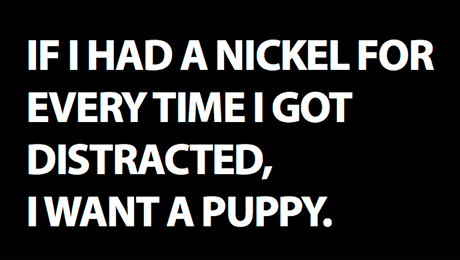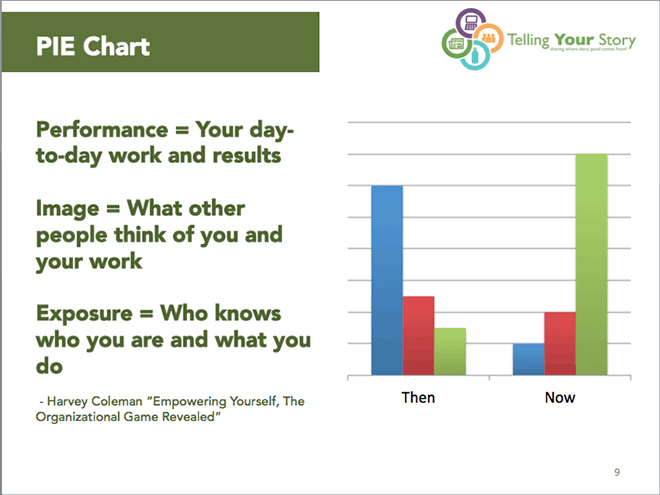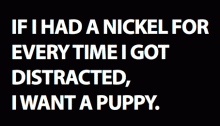First, what is a personal brand?
Most people think of celebrities as the only people who have personal brands but the truth is that everyone has them.
It’s just that celebrities usually get paid a ton of money and have the access to endorsement platforms. We (the audience) can’t help but notice their personal brand because a company is advertising it to get their product more exposure.
But here I’m just talking about you and the personal/professional brand that you project to others. If you need a definition of personal brand, I really like this one.
A brand is a person’s perceptions of their experiences with you.
If people think you are a good listener and then you do what you say you are going to do for them, they will form a good opinion of your personal brand. If you do the opposite, then you know what happens.
I also love what Glenn Llopis says about branding in this article on Forbes, “Your personal brand should represent at the value you are able to consistently deliver to those whom you are serving.”
Consistently is the keyword there. Trust of your brand is built up over time but it can be destroyed pretty quickly if you veer off the consistent path of your brand perception.
In this day and age of hyper connectivity and massive information overload, your personal brand can help raise your profile and get people to notice who you are quickly.

In Harvey Coleman’s book, “Empowering Yourself, The Organizational Game Revealed” he talks about the PIE chart – Performance, Image and Exposure.

Performance means your day-to-day work and results.
Image means what other people think of you and your work.
Exposure means who knows who you are and what you do.
Mr. Coleman maintains that what we are told is that our performance means everything to your career – if you do the work, keep your head down and just work a little on your image, you’ll be fine.
That may have worked in the theory but it’s not how it works now.
While your performance means the world to your brand, you have to put significant thought into your image and work on getting exposure. Here are some questions to ask yourself.
PERFORMANCE: Can you say that you know what you are doing and you can answer questions about it?
If you can’t answer this yourself, you really need to stop and question what it is that you do. This should not be confusing or vague to you because your entire brand will be built on this. It can change over time or position, but it is the essence of your brand.
IMAGE: Do you feel like others trust you with what you say you do? People have very acute sense of BS detectors when you talk about what you do.
You should have an acute sense of how they are reacting to you when you talk about what you do.
EXPOSURE: Do others come to you instinctively when they need something related to your field?
This should not be defined by your title. And don’t blame others if they aren’t coming to you, it’s your fault if they don’t know what you do. I hear that quite a bit that people should know – no, they shouldn’t just know – they should be exposed to what you do.
More importantly, do you feel that management knows what you do, is excited about what you do and would come to you if they needed help?
This can make or break your brand. If your boss and your boss’s boss don’t come to you, there’s a serious issue there.
When it comes to budget cuts, you’ll have a lot more issues defending your budget if they don’t easily understand what you do. This is branding.
How to build a brand
1. You need to define who you are professionally.
Every brand is a story. What’s your story? Here’s how you create your story.
What are you known for? What do you want people to think when they think of you?
Write a brand statement for yourself. Here’s a template I use.
To (target audience), (your name) is the (blank) provider/service of (blank) delivered through (blank).
Here’s mine…
To the dairy industry, Don Schindler is a thought leader for creative integrated marketing and communications solutions delivered by digital communications and educational training.
Here it is reduced to 140 characters: @donschindler is a creative marketing professional who teaches you how to use social media and digital communication tools.
2. You need to create your elevator pitch.
An elevator pitch is how you would describe what you do to someone who has an issue that you can solve. You can provide them with a solution – you should always approach knowing you have a solution to their problem.
For me, my idea clients are people who are struggling with their communications especially digital communications.
Here’s my pitch.
I can give your staff the communication skills to tell a story to your audience that will get them to act the way you want. Even if you think all your staff knows how to do is send out a press release.
Guarantee to work. If not, you’ll get your money back.
The guarantee is to form the basis of trust. I know what I’m doing and I trust it to work if you follow my steps and are willing to do the work.
Because with every interaction (whether a question or conversation), I promise to give you the best possible return for your time taken with me. And you can trust me to be honest, to have your best interest in mind, to give you a reason, to focus on you and what you are trying to accomplish, etc… Just remember that trust is very fragile.
If you go off brand or don’t deliver, it will be broken and it’s very, very hard to earn back.
3. You need to craft your stories.
Trust me, you are a storyteller.
Now that you have your elevator pitch and the image definition of yourself, you should start crafting your stories that promote your image.
How do you craft your stories that match your brand image?
- Be You – authentic, natural you. This is where trust is the highest.
- Talk to people like friends – when you are talking with friends, do you worry about the story you are telling or do you just tell it? Most people have no problems telling stories when the pressure is off – you are relating what has happened that your friends would find funny or interesting. By “being you”, you relate authentic stories – this is what captivates an audience.
- Use your experiences – very few storytellers can use another’s story and pass it along as their own. Again, people have a high BS meter. You have experiences that should relate to what your audience wants to know. You might have to sit down and write them down – that’s ok – but don’t be inauthentic. It will burn you in the end.
- Practice – use your brand stories and watch out people react. Did they laugh, did they cry, were they indifferent? Over time, you’ll know which stories to use. Remember audiences want to react – they may not trust you in the beginning – but they want you to entertain them on both an individual level and in a group setting. With practice, you’ll get better and understand when to pause and when to speed up the story.
4. Getting exposure to your personal brand
Exposure = sharing.
I’m a big proponent of sharing and I wrote an entire post on it. It’s the secret to personal branding.
I view all social media as a chance to share and get exposure.
I do not view it as a “private” me area. If you want a private me area, then I suggest using other platforms beyond social media.
Now I know I’m the digital guy but I believe in the traditional tools of the trade for personal branding. You need this foundation set before moving on to anything shiny and new like social media.
You will need these things for personal branding:
- Business Cards – still the industry standard
- Attending Events – going to events and meeting people face-to-face will help you the most in establishing trust
- Join Peer Groups – masterminds, business networking, sports, etc… all can help your personal brand
- Email Signature – you need to make sure people know who you are when you reach out or you get passed along on an email thread
- Corporate Blog – getting on your company’s blog can give you a ton of exposure to your industry
- Social Media Websites – passing along relevant information attached to your brand can give you exposure to people you would have never met physically
Whether you gather contacts from an event or online connection, all of them need to be housed in a central location. This can be your company’s CRM (customer relationship management) tool or if you want to just use LinkedIn or a simple spread sheet in Google Docs (keep in the cloud so you don’t lose it if your computer dies).
Your email tool, like Outlook, is not a CRM and is difficult to transfer data back and forth between other tools.
With digital communications tools you can shape your professional brand to make it look the way you want it to. Here I’m talking about the different social media tools.
BLOG POWER
My home on the web
Can be done for free
Search engines love blogs
Easy to do and gives you personality
Comments/Feedback
Inbound links
No one can change the rules on your death star
Here’s my how to get started using a blog.
LINKEDIN POWER
It’s the easiest to maintain
More connections gives you a bigger network
Your online resume and portfolio
Public recommendations
Groups to help networking
Connected to Twitter and Facebook with a third party application
Here’s how to get started using LinkedIn.
LINKEDIN TIPS
Connections are everything – connect with everyone you meet in business.
Correct people’s profiles and summaries for advanced search.
Groups can be strong but difficult to maintain.
Tag others in updates to get their attention.
Understand there is more reading/stalking then interaction.
Use LinkedIn Pulse and share relevant content to your networks.
FACEBOOK POWER
Large network – 1.25 billion people
Professional and personal life blend the most
Share, Comment, Like, Friend
Positive messages are shared more
The use of lists is a must to control the algorithm
Your digital diary
Here’s how to get started using Facebook.
FACEBOOK TIPS
Try and use graphics or videos with links to drive back to website.
Funny stuff drives a lot of engagement along with questions.
Worry more about engagement and not numbers (straight from Facebook).
Pay for play on Facebook.
Use employee advocates to engage in company posts. (Make sure you have social media compliance)
TWITTER POWER
Fastest way to meet people you don’t know
News and rumors travel fast
Lots of noise and marketing garbage
Use lists to control\
Follow advocates and monitor detractors
Able to track conversations and trends
Here’s how to get started using Twitter.
TWITTER TIPS
Use common hashtags (creating your own is hard)
Use tools like ManageFlitter, Tweepi, or TweetAdder to add people
Use favorites to get people to follow
Do NOT auto-reply
Tweets with links in the middle
Use third party apps to control like Hootsuite, Tweetdeck, Tweetcaster.
Use search to answer questions
PINTEREST TIPS
Visual search (much better than traditional)
Recipes, clothes, decorations, crafts, infographics, and more…
Heavy use by women
70 million users and growing
Can drive extreme traffic to websites
Still a new network
Here’s how to get started using Pinterest.
Other Networks
Instagram – Here’s how to get started using Instagram
YouTube – Here’s how to get started using YouTube
Don’t have How To’s on these networks yet but I recommend checking them out.
Snapchat
Yelp
Flickr
Vine
Jelly
Secrets of Personal Branding Success Online
- Help others first. Highlight them, encourage them and in return they will be there for you.
- Don’t rant or be a Debbie Downer. Negative posts garner initial attention but it fades quickly.
- Don’t try and do all networks at once. Pick one and dig deeper.
- Schedule some time for it. 20 minutes a day if you can.
5. Monitor and Measure Your Brand
There are a couple of free tools that can help you monitor your brand.
Talkwalker Alerts – This will monitor you on the web.
Mention.com – This will monitor you via social media.
To measure your brand simply ask people who they think you are and what you do. If they don’t know or get it wrong, then you need to adjust your message or possibly your exposure.
Make sure you are googling yourself – what does it say you are?
Make sure you sign out if you are logged into Google and delete your history so it doesn’t effect your search. It’s even better to check from an outside source or computer.
So a long blog post but I think it’s got some really good stuff in there. What would you add?

Leave a Reply